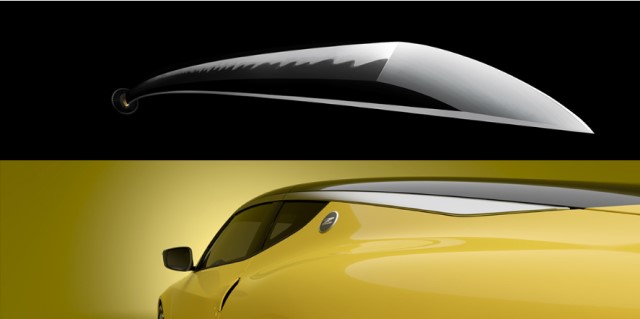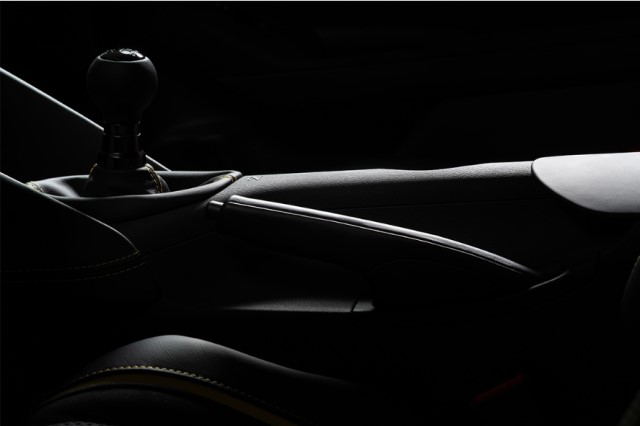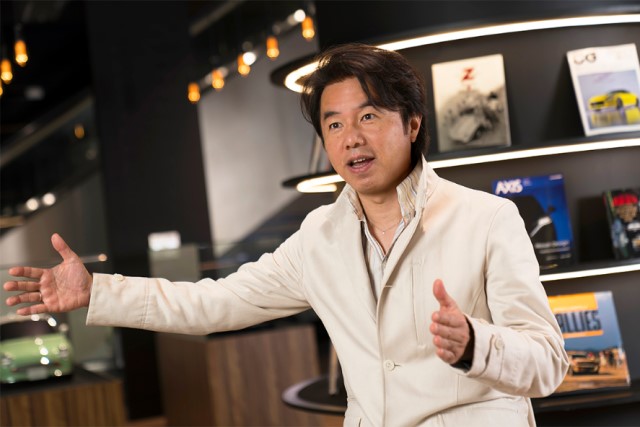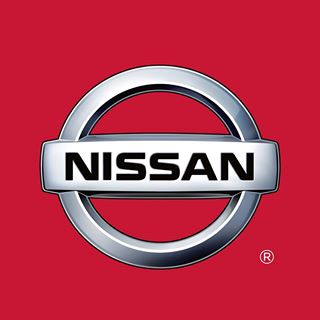Nissan Z Proto Program Designer Director Shinichiro Irie Interviewed
Catching some Z’s
In this second installment of The Essence of Z-Ness, Nissan talks with Shinichiro Irie, the Program Design Director of the Z Proto. They ask him what he thought were the qualities that defined the Z Proto, what to look forward to with the next Z, and to give insight into what exactly went into the thought process of the Z styling, from pen and paper to reality.
Irie joined Nissan’s Design Department in 1993 after graduating from the Tokyo University of Art. In 1997 he became a Senior Designer and in 2001 joined Nissan’s Creative Box, a satellite studio located in Harajuku, the center of youth fashion in Tokyo. There, he concentrated on design development of trendsetting concept cars. In 2013, he became a Design Director of Nissan and Infiniti brands at Nissan Design America and, in 2016, was named Program Design Director at the company’s Global Design Center in Japan.
In terms of design, what gives the Z Proto its Z-ness?
Irie: The Z has a rich history and possesses many iconic elements. Take the headlamps for example. On the original 240Z (S30), when the headlamps illuminate through the outer lens, they created a unique exterior reflection. We employed this shape and infused it with modern technology to create the new Z’s headlamp signature that’s both modern and familiar.
The styling of the rear combination lamps is another example. Although many have likened it to the Z32’s, in fact the original Fairlady Z and other past Zs had a similar design. Like the headlamps, we designed the rear lights with our heritage in mind but used a new approach that resulted in this powerful, iconic motif.
Another unique element is the silver accent that enhances the car’s roofline. In the studio, we refer to this as the katana, as it shares a similar shape to the traditional Japanese sword. The Z Proto features a two-tone paint scheme with a black roof, and the accent draws the eye, creating a very “Z-esque” silhouette that slopes down from front to rear. The accent also won’t lose its effect in monotone or lighter paint schemes.
What is the Z’s role in the Nissan lineup?
Irie: Of course, the Z is an icon to car enthusiasts around the world, but I think that one of its main roles has been to awaken the passion in all of us at Nissan. The passion from within makes the Z a one-of-a-kind entity at Nissan, providing inspiration for all of us.
Also, in this era where we’re creating vehicles for the electrification era—notably our cutting-edge EV, the Ariya—I feel it’s important to have vehicles positioned across our lineup. That’s why I think it’s essential that the Z has its own unique and cherished specifications, including a manual transmission, something our customers expect and appreciate. Therefore, in our Nissan NEXT transformation plan, the “A” symbolizes the Ariya, and the Z appropriately represents “Z.”

The character line of the Z seems to play a major role in the car’s styling. What does it do?
Irie: To position this character line was truly like threading a needle. We’re talking pinpointing it in the space of less than 1 mm. Because the new Z has a FR layout (front engine/rear drive), the character line conveys the transference of power from the engine to the road, moving the design’s energy from the front of the body to the rear fenders, wheels and tires. If you look closely, the line vanishes around the door handle. The reason for this is, like a drawn bow, the line pauses to collect its power before dispersing it to the rear of the car. To me, this single character line expresses the soul of Z.

Why do you think the Z has had such a strong fan base, going strong for 50-plus years?
Irie: I feel it’s because the Z, which some in Nissan liken to a dance partner, has always been a sports car that excites the senses while still being familiar and within the reach of many people. This has allowed the Z, regardless of model or generation, to be consistently loved. I received a message on my Instagram account the other day from a father and son who own two different generations of Zs. When they said that they were looking forward to the next Z, I thought, “We’re creating a car that will start another chapter in the Z family, both vehicle generations and for Z enthusiasts.”
What is your history with the Z? What have been your standout memories and experiences?
Irie: To be honest, growing up in the supercar era, I didn’t have much interest in Japanese cars. But the reason that I decided to join Nissan as a designer was largely due to the Z32 (300ZX). While I was a still a student, I spotted one driving around town. I still remember the utter amazement that I felt when I first laid on eyes on it. This was something that I had not experienced since first seeing a supercar. And when I discovered that the car was manufactured by a domestic company, I was amazed again! The Z32 featured a low body, lower than those of other sports cars of its day, and I never imagined that a Japanese company could create something with such iconic styling. Actually, I’ve been sketching sports cars for fun since I was a child. Even before I laid eyes on the Z32, I sketched cars that looked like the original Fairlady Z (240Z). I loved drawing cars with very unique appearances like the Z. At school, my teacher often told me off for it in class. I guess you could say I was just preparing for my future!
Q: What are you looking forward to most about the next Z?

Irie: I’m looking forward to seeing it mixing in the world with other wonderfully designed cars. For instance, at the Pebble Beach Automotive Week there are many notable cars on display, but the cars driven around town by the attendees are quite impressive. Spending the whole day strolling through the parking areas is as entertaining for me as the event itself. But, when looking at these vehicles, I felt that I still hadn’t created a car that would look at home next to them. Well, with the new Z, I feel that I have finally done it.
How would you like the Z to be ultimately received?
Irie: The design theme of the new Z is the fusion of traditional and modern technologies. My wish is that the Z satisfies all enthusiasts, and they will continue to love the Z. Also, by inheriting the Nissan sport car spirit, I hope the new Z will be nurtured by everyone in the years to come.
COMPANY DETAILS |

|
|
Company |
Nissan Motor Corporation |
|
Website |
|
|
Connect |
   
|
|
|
|
|
Phone |
(855) 426-6628 |
|
Address |
P.O. Box 685003 |
|
Franklin, TN 37068 |
ABOUT Nissan Motor Corporation®
Nissan first came to the United States to sell vehicles in 1958 and began importing and making Datsun vehicles in the United States under the Nissan Motor Corporation in U.S.A. (NMC), name in 1960. In 1990, Nissan North America Inc. (NNA), was created to coordinate all of Nissan’s various activities in North America to enhance the design, development, manufacturing, and marketing of Nissan vehicles. In 1998, the two organizations merged operations under the Nissan North America, Inc., name. Headquartered in Franklin, Tennessee, Nissan’s North American operations include automotive styling, engineering, consumer and corporate financing, sales and marketing, distribution and manufacturing for the United States, Canada, and Mexico.
